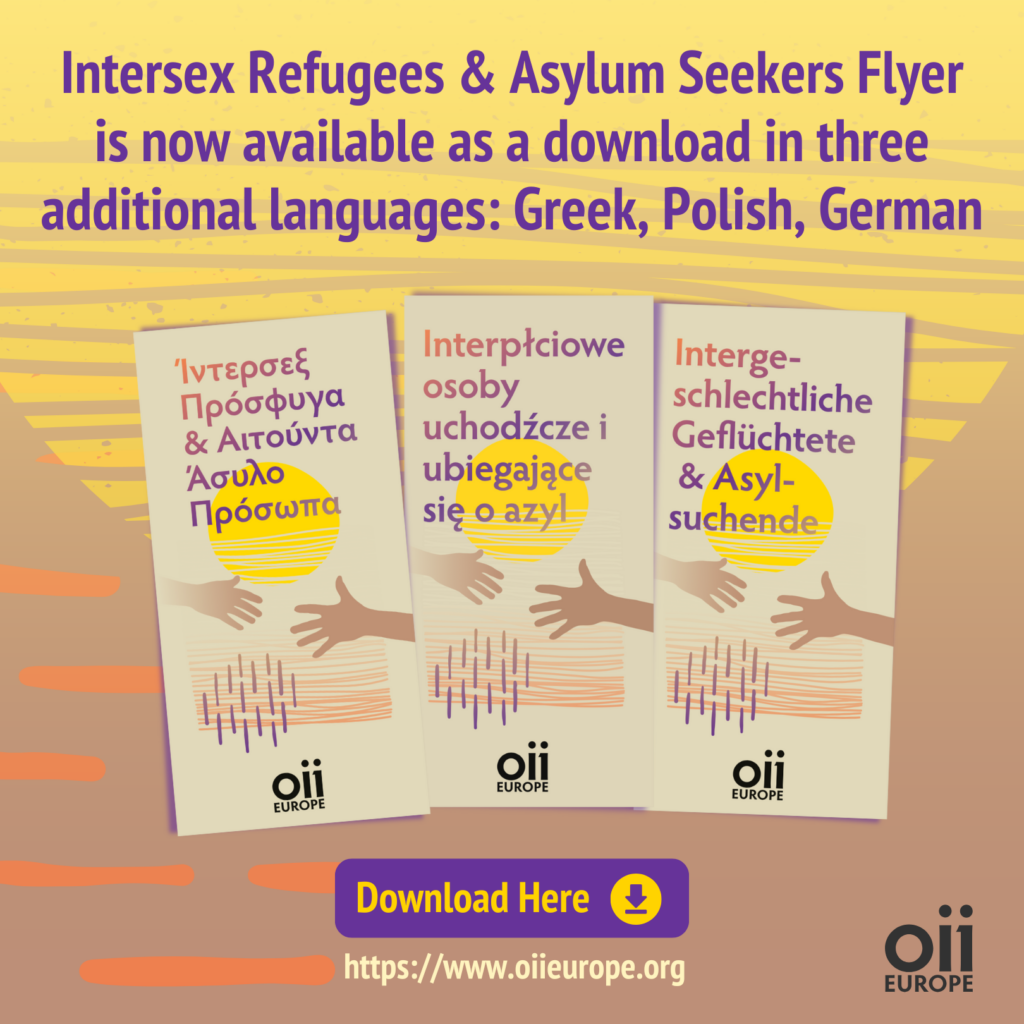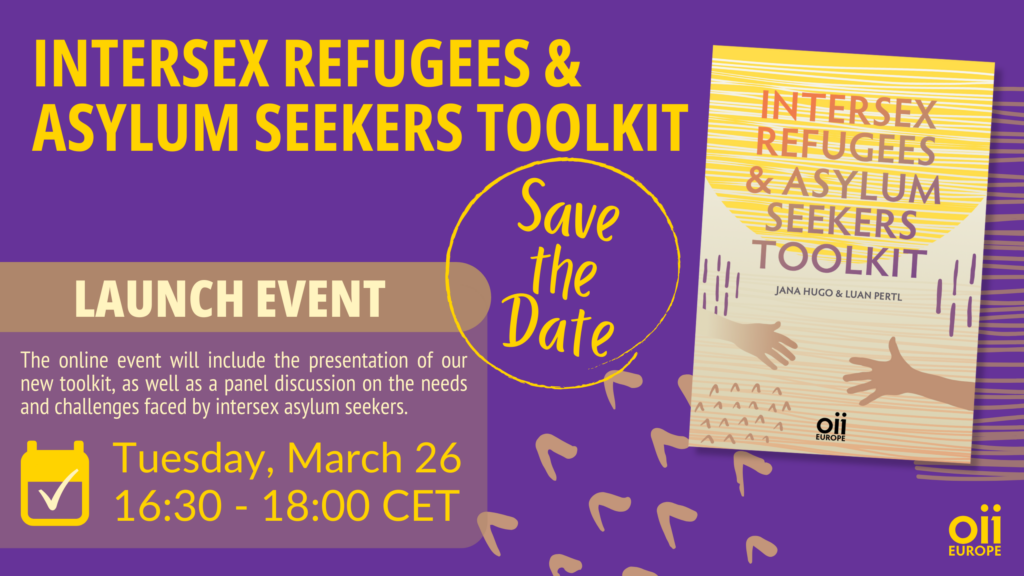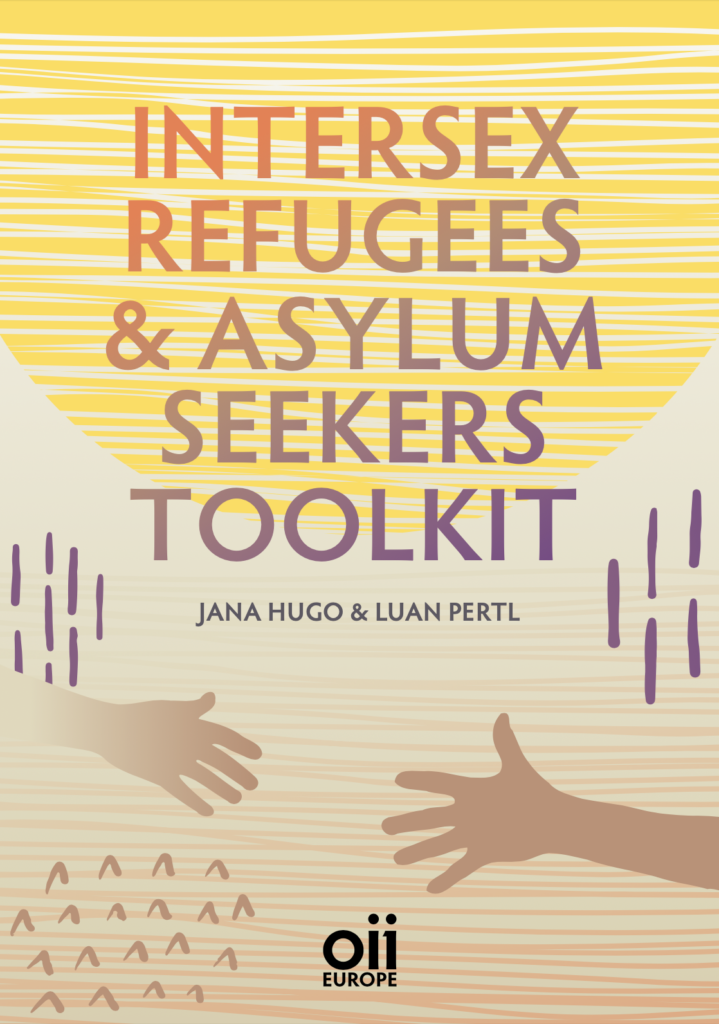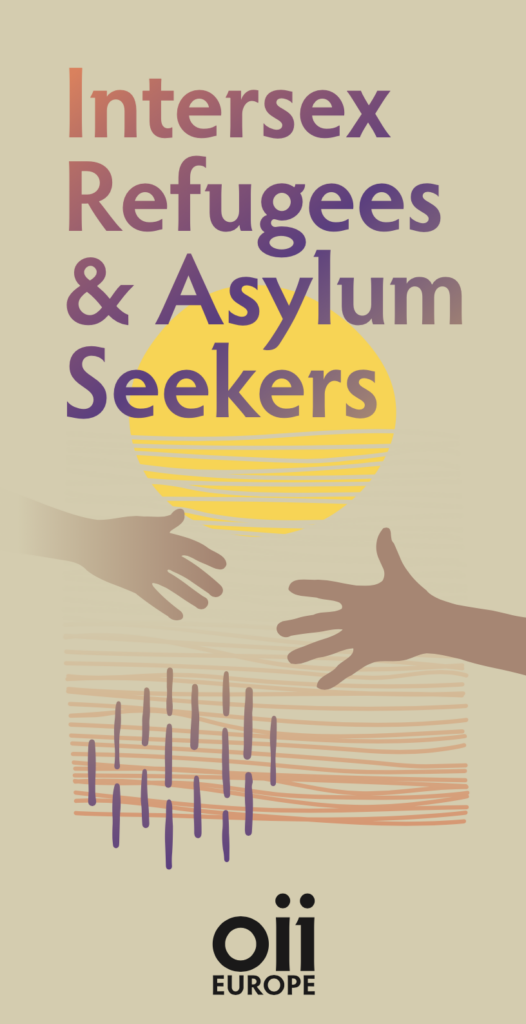Intersex Refugees & Asylum Seekers
Last Updated: 05.03.2025
This is a live document – please check back for updates

Our Intersex Refugees & Asylum Seekers Flyer are now also available in Greek, Polish and German

Visit our 2024 IAW Campaign (click the image above)

The Toolkit is available now

“All over the world, people are fleeing persecution on the basis of their sexual orientation and/or gender identity (SOGI). For many, arriving in Europe is also accompanied by discrimination, violence and exclusion.”
Petra Sussner (2020) “Flucht – Geschlecht – Sexualität: Eine menschenrechtsbasierte Perspektive auf Grundversorgung und Asylberechtigung” (Juristische Schriftenreihe) Verlag Österreich (transl.from German)
For many intersex refugees other or additional reasons for persecution and discrimination can be their gender expression and sex characteristics (SOGIESC). On their arrival in Europe they are entering into a country where intersex is still stigmatized and a taboo, where there is still too little awareness of what it means to be intersex, and where non-consensual surgeries and treatments of intersex people are still the norm.
All asylum authorities, staff working within the asylum procedure – as well as social actors, social welfare officers and organisations working with refugees – should be sensitised to and aware of the specific sensitive approaches to adopt when interacting with and supporting intersex refugees.
Because of their role as the first contact point between intersex refugees and asylum seekers, asylum authorities, for example, need to be especially aware of the needs and the challenges faced by intersex people, so that they can ensure that interactions with intersex people do not cause further harm and make them feel safe and supported. Once their asylum application has been granted, social welfare officers, who accompany intersex persons, need to be aware of the specific remaining challenges intersex refugees may still face as they settle into their new home.
With the OII Europe Refugees & Asylum Seeker toolkit we aim to increase the amount and quality of the information and support being made available to intersex refugees and asylum seekers and to give professionals a tool at hand that sheds light on the specific challenges intersex asylum seekers and refugees face.
The online event included the presentation of our new toolkit, as well as a panel discussion on the needs and challenges faced by intersex asylum seekers.
The agenda of the event included:
- Welcoming remarks by Dan Christian Ghattas Executive Director, OII Europe
- Introduction by Luan Pertl and Jana Hugo OII Europe
- Panel Discussion, moderated by Magda Rakita Co-Chair, OII Europe
- Q&A and closing remarks
Panelists:
- Artem Lapov, Member of Alter Corpus France
- Julius Kaggwa, Program Officer, Intersex Human Rights Fund
- Georgia Arapidou, Senior Vulnerability Officer, EUAA
- Dr. P. Sussner, Legal Gender Studies, Humboldt University Berlin
Intersex and Refugee Status:
3 Main Constellations
- Identifies as intersex and accepted as intersex refugee (constellation 1)
- Identifies as intersex and LGB, accepted as LGB refugee (constellation 2)
- Identifies as intersex, granted subsidiary protection due to medical reasons (constellation 3)
Challenges of constellation 1
Identifies as intersex and accepted as intersex refugee
- just one (1) known positive case
- not all intersex people know the term intersex, they don’t have a name for who they are,
- or they use different terms, (e.g. “XY Women”, “XX Men”, “DSD”, etc.)
- or they use a diagnosis (e.g. “Androgen Insensivity Syndrome”, “Klinefelter Syndrome”, “Congenital Adrenal Hyperplasia”, etc.)
- not all intersex people identify
as intersex
Challenges of constellation 2
Identifies as intersex and LGB,
accepted as LGB refugee
- keeps intersex identities invisible
- reproduces a binary gendermodel
- not all intersex people identify as LGB, but need the LGBTIQAA Support
Challenges of constellation 3
Identifies as intersex,
granted subsidiary protection
due to medical reasons
- subsidiary protection
- the need for a medical statement
(re-traumatisation, not all European countries are safe for intersex people) - intersex people without a medical diagnosis have none or very limited access to subsidiary protection under this ground (Note: this is why protection under the ground of sex characteristics is key)
What to do now?
Supporting Intersex Asylum Seekers
- Some intersex people may need medical treatment; but there is the danger of re-traumatisation
- Good preparatory support is needed; e.g. detailed advice on how the respective medical system works is important
- If possible accompany them or find a person who can accompany them
- Connect them with the local intersex community or with OII Europe; we will reach out to the local intersex community
- support them in finding peer counselling, inter* sensitised counselling and/or therapists
- Intersex asylum seekers may not know the word intersex so you will need to prepare well for the Asylum interview; be careful with translators, most of them also don’t know what intersex means.
- Collect evidences together with them, during every community meeting and every chat
- Some intersex people identify as trans*, but become aware that they are inter* through an examination – a careful approach is important because of previous trauma – Note: some intersex people identify as trans* with knowing that they are intersex
Accommodation Structure
Intersex refugees and asylum seekers are especially vulnerable. Being able to change the gender marker in their documents can protect intersex and trans refugees and asylum seekers from the risk of structural and other discrimination and can ease the pressure that they are subjected to. Therefore, low treshhold procedures for legal gender recognition based on self-determination should be established for refugees and asylum seekers who wish to have their gender identity reflected in their official documents.
- Our experience shows that intersex people encounter massive violence in accommodations. Room distribution is often randomly decided due to the persons gender marker in their official documents, or on an assumed gender based on perception without taking the specific needs of the intersex person into account.
- Finding safe accommodation as soon as possible is important; specific LGBTIQAA accommodation is best, if wished for by the asylum seeker
- For families with intersex children separate little flats are recommended
- (always check the country rules for accommodation transfers)
Contact to intersex-led NGOs with expertise
This is a regularly updated list of intersex-led NGOs who have experience and expertise on the topic of intersex refugees and asylum seekers:
VIMÖ / OII Austria (Austria)
Email address: info [at] vimoe.at
OII France / CIA (France)
Email address: cia.intersexes [at] gmail.com
Fundacja Interakcja (Poland)
Email address: magda [at] interakcja.org.pl
NNID (The Netherlands)
Email address: info [at] nnid.nl
Intersex Greece (Greece)
Email address: intersexgreece [at] gmail.com
Flyer on Intersex Refugees and Asylum Seekers


